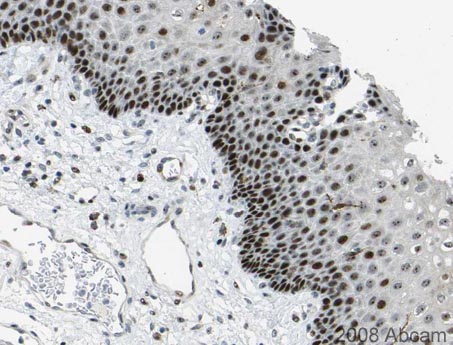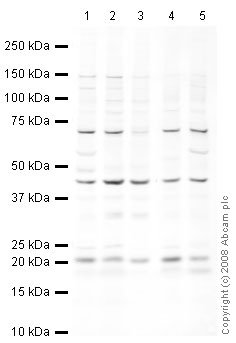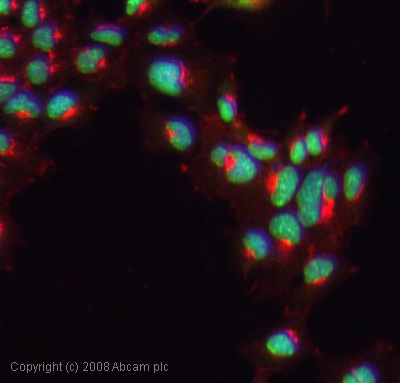Anti-UBE2C antibody
| Name | Anti-UBE2C antibody |
|---|---|
| Supplier | Abcam |
| Catalog | ab12290 |
| Prices | $385.00 |
| Sizes | 100 µg |
| Host | Rabbit |
| Clonality | Polyclonal |
| Isotype | IgG |
| Applications | ICC/IF ICC/IF WB IHC-P |
| Species Reactivities | Human, Mouse |
| Antigen | Synthetic peptide derived from within residues 150 to the C-terminus of Human UBE2C |
| Description | Rabbit Polyclonal |
| Gene | UBE2C |
| Conjugate | Unconjugated |
| Supplier Page | Shop |
Product images
Product References
Gene expression profiling of mouse p53-deficient epidermal carcinoma defines - Gene expression profiling of mouse p53-deficient epidermal carcinoma defines
Garcia-Escudero R, Martinez-Cruz AB, Santos M, Lorz C, Segrelles C, Garaulet G, Saiz-Ladera C, Costa C, Buitrago-Perez A, Duenas M, Paramio JM. Mol Cancer. 2010 Jul 14;9:193.
Expression and effect of inhibition of the ubiquitin-conjugating enzyme E2C on - Expression and effect of inhibition of the ubiquitin-conjugating enzyme E2C on
Lin J, Raoof DA, Wang Z, Lin MY, Thomas DG, Greenson JK, Giordano TJ, Orringer MB, Chang AC, Beer DG, Lin L. Neoplasia. 2006 Dec;8(12):1062-71.


